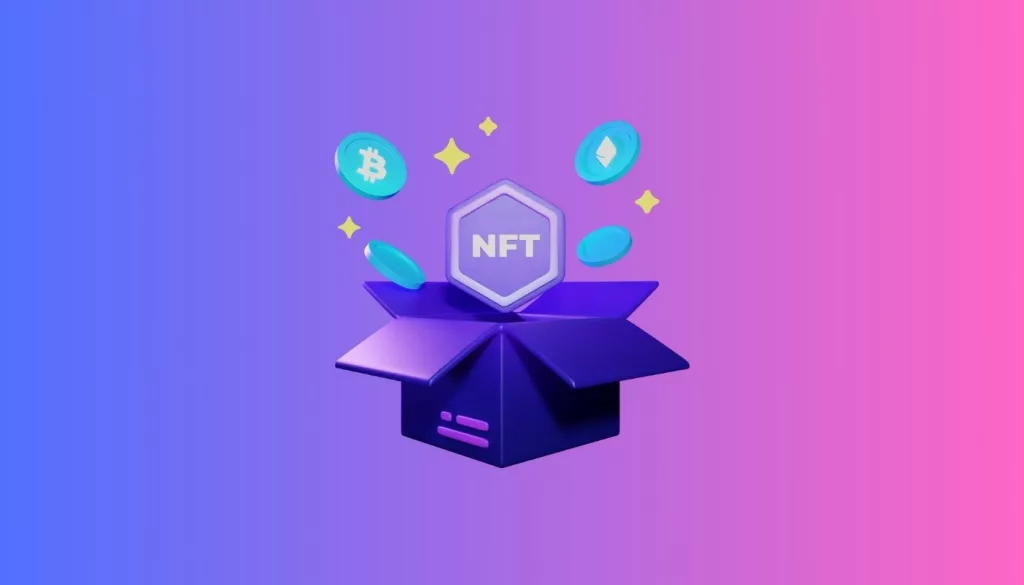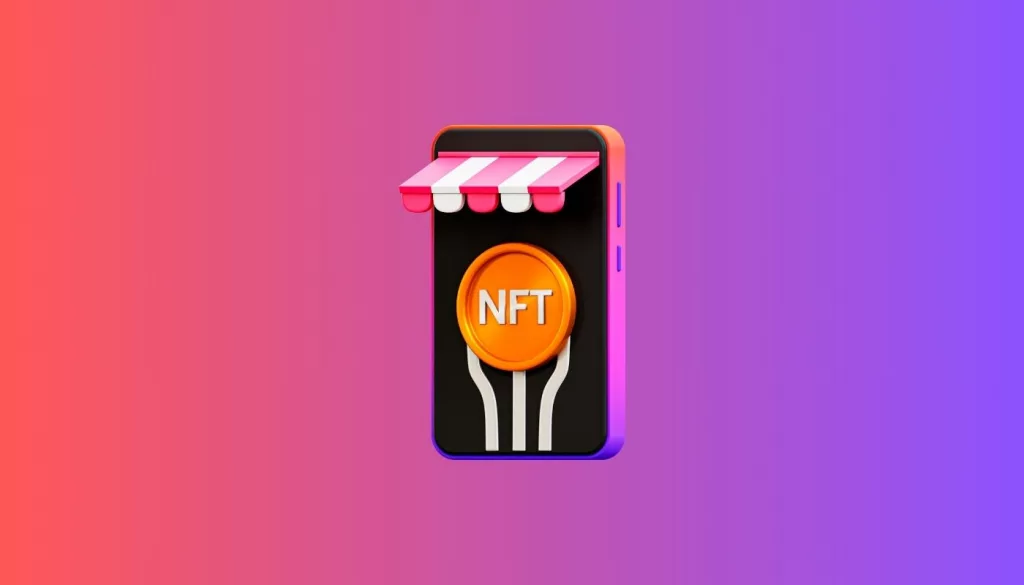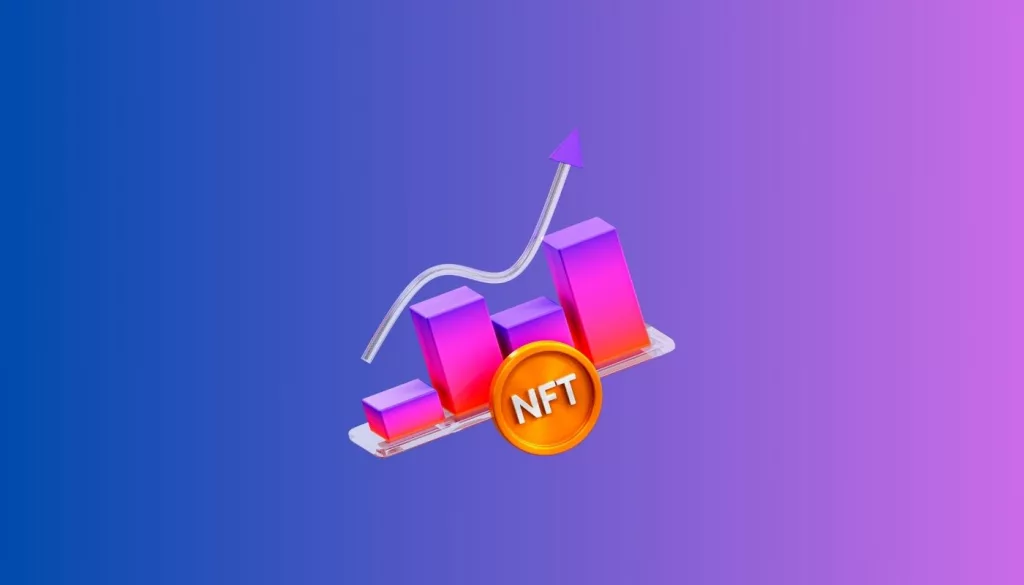“How to enter the expanding market of crypto collectibles?” is one of the most urgent concerns in the minds of ambitious entrepreneurs. According to Forbes, the global NFT market cap today is $71.81 Billion. On a daily basis, investors spend an average of $6.89 billion on crypto collectibles. As a result, starting the creation of an NFT marketplace can help you succeed in the crypto sector.
Also read: 7 Tips for Marketing Your NFTs on Social Media
- What Is an NFT (Non-Fungible Token)?
- Why is now the right time to start developing the NFT marketplace?
- The Industry’s Most Well-Known NFT Marketplaces
- What Are The Top 5 Things To Think About When Creating Your Own NFT Marketplace?
- Step By Step Guide to Create An NFT Marketplace:
- How Do You Develop An Advanced NFT Marketplace?
- What Does it Cost to Develop a MultiChain NFT Marketplace?
- What Is The Cost Of Deploying Smart Contracts?
- An NFT Marketplace’s Multiple Revenue Streams
- Final Thoughts
What Is an NFT (Non-Fungible Token)?
A Non-Fungible Token (NFT) is a unique digital asset that represents ownership of a specific item or piece of content, such as artwork, music, or videos, using blockchain technology. Unlike cryptocurrencies like Bitcoin, which are fungible, meaning each unit is the same as every other unit, NFTs are one-of-a-kind. Each NFT has distinct properties and cannot be exchanged on a one-to-one basis with another NFT. This uniqueness allows NFTs to verify authenticity and ownership of digital media, making them highly valuable in industries like art, music, and gaming. NFTs are typically purchased, sold, and traded online, often with cryptocurrency, and they are encoded with the same underlying software as many cryptos.

It’s a one-of-a-kind digital collectible made on Binance Smart Chain (BSC), Cardano, EOS, Ethereum, Flow, Polkadot, Solana, Stellar, Tezos, and TRON blockchain networks. Artwork, domain names, fashion items, gaming weapons, memes, music, pictures, source code, sports products, tweets, and videos are all examples of NFTs.
All crypto collectibles are indivisible, interoperable, non-transferable, limited, and transparent. NFTs are sold in live auctions on online markets to interested investors.
If you want to develop an NFT Marketplace you must look at top NFT development tools checklist & some common mistakes to avoid during NFT development.
Why is now the right time to start developing the NFT marketplace?
Every day, NFT marketplaces around the world process buy and sell trades totaling billions of dollars. Both institutional and ordinary investors are interested in them. Crypto collectibles are a reflection of the future of digital ownership, and they help to support the creator economy. Artists, content providers, designers, musicians, and publishers can sell their work to their target audience directly. They are no longer reliant on any middlemen.
Apart from that, the sector is also seeing the debut of a slew of new NFT marketplaces. AMEPAY, Binance, BOAX, Efinity, Jambb, Mostexpensive.io, Musee, RareMall, and Refinable are among the companies featured. Venture capitalists (VCs) are pouring money into these online platforms in large sums. As a result, there are no limits to how far you can go in the world of digital collectibles.
Entrepreneurs like you, in particular, can have a lot of success by starting the NFT marketplace development process. Concentrating on industries such as artwork, e-commerce, gaming, music, real estate, social media, and sports can help cryptopreneurs make millions.
Also read: What Is NFT Metaverse Launchpad?
The Industry’s Most Well-Known NFT Marketplaces
The top NFT marketplaces by daily trade volume have seen some shifts in 2025. As per the latest data from DAppRadar, the current leaders are:
- OpenSea – Continues to dominate the market with significant trade volumes.
- Magic Eden – Known primarily for its activity on the Solana blockchain but has made a significant impact overall.
- X2Y2 – Another key player in the Ethereum-based marketplaces.
- LooksRare – Gaining traction among traders for its community-focused features.
- ImmutableX – Known for offering gas-free transactions, which is a big draw for many users.
These platforms remain primarily based on the Ethereum blockchain, with the exception of Magic Eden which operates on Solana. This indicates a continued preference for Ethereum’s infrastructure in the NFT marketplace sector, despite the diversification of blockchain technologies used in other areas of the market.
If you want to develop your own NFT marketplace, consider hiring from top NFT marketplace development companies.
What Are The Top 5 Things To Think About When Creating Your Own NFT Marketplace?

An Option For Advanced Search And Filtering
Interested crypto investors can use the modern search tool to find their ideal NFT. They can narrow down their choices by adding information such as listing status, artist or collection name, payment method, price, and recently added.
Flexible Auction Platforms
For example, the Rarible NFT marketplace allows artists to participate in two sorts of auctions. They have the option of participating in single or several auctions. The sale of crypto collectibles online will take place at a certain time.
In addition, content creators can choose between declining and set price listings. They should upload files that are compatible (GIF, JPEG, MP3, MP4, PNG, and WEBP). Artists must provide details such as a description, payment methods, % royalty, sale price, and title.
Digital Wallets That Work Together
Investors seek a secure location to keep their cryptocurrency holdings. Several digital wallets are seamlessly integrated by our NFT marketplace development organisation.
Binance Chain Wallet, Coinbase Wallet, Fortmatic, MetaMask, Portis, Torus, Trust Wallet, WalletConnect, and WalletLink are among the software wallets available to NFT buyers. End-to-end data encryption, private keys, and two-factor authentication are used to protect the precious assets.
Instant Notifications Can Be Shared
During live auctions, many investors eagerly bid for NFTs. As a result, you can send push notifications to buyers. Airdrop programmes, brand-new collections, hot bids, top sellers, and trending collections are all examples of information that could be included. As a result, potential cryptocurrency investors will make the best option possible and avoid missing out on a rich opportunity.
Assistance is available 24 hours a day, 7 days a week.
By providing round-the-clock technical support, entrepreneurs can help content creators and users resolve problems and issues. Buyers and sellers of NFTs can also work out issues with bidding, listing, minting, and payment processing. They can reach out to the Help Center by email, Discord, live chat, or phone.
You might look into How to Hire the Best NFT Developer for Your Business?
Step By Step Guide to Create An NFT Marketplace:
As we are already aware, developing an NFT platform is essentially the same as developing other technology solutions. The only difference is that because it trades cryptographically secured objects, this software requires a blockchain connection.
- Define your niche
Defining your target niche should be of first priority. You must have knowledge of the present market in order to establish a successful NFT marketplace. You should concentrate more on the vertical market than the horizontal market, because in the vertical market, the supplier sells products that cater to a specific sort of target audience.
- Define User Roles
Now, defining user roles should be your next priority. Although, there are mainly 3 user roles in NFT Marketplaces. For instance, the three user roles are buyers, creators, and administrators.
- Documentation for the project
Further, the project documentation stage kicks off the site development process. If you are willing to manage a remote development team, project documentation is a critical aspect of the NFT marketplace development platform, but Project documentation is unimportant if you are willing to engage a full-time development team. This stage also saves time by providing a thorough roadmap to the next one.
- Prototype Development
After that, we can go on to prototype the user interface once we have a solid idea of the product strategy (UI). You should already know if your users prefer mobile apps or a desktop experience at this point. This knowledge will inform the prototypes you design, whether they are for a mobile app or a web-based app. It can be both if you have enough money.
The prototyping phase is used to describe user journeys, create mock screens for your NFT marketplace, and then flesh out and test the entire user experience (UX). You may wish to tweak the design after testing to include feedback from real users.
This method ensures that you don’t waste time and money coding something that doesn’t resonate with clients. Prototyping is an important aspect of the agile development process because it allows you to quickly iterate and produce a product that customers desire and understand.
As a result, I strongly advise that everyone begin designing an NFT marketplace via fast prototyping. - Plan the Platform’s UI/UX Design and Get Started on the Front-End
The design of the user interface and user experience (UI/UX) is critical in the development of an NFT marketplace. The marketplace’s navigation and design give the initial impression, therefore it should be simple enough for everyone to comprehend and utilise.
The major goal of front-end development is to create a simple NFT marketplace interface. Angular.JS, Backbone, React.js, or Ember (as programming languages) and MVC, MVP, MVVM, or Viper (as architectures) are some of the front-end technology stacks that can be employed (for architecture). - Stage of Development:
During the development stage, you select the framework that is most appropriate for the project. To ensure rapid platform operation, stability, and good performance, you should utilize a specific SDK (Software Development Kit).
- Use Token Generators
Token generators construct smart contracts at this point. Small contracts are self-executing contracts in which the seller and buyer’s terms and conditions are expressed as code lines. Furthermore, a distributed, decentralized blockchain network contains the code and agreement. Hence, this step is mostly responsible for adding logic to the web page.
- Test and Execute
Testing and executing can help you in identifying and correcting bugs. Also, software testing verifies that the current project fits the project’s requirements. The fundamental reason for the importance of this step is that a well tested software product ensures security, dependability, and high performance.
- Improvement and Maintenance
Finally, even after the formal launch, you must continue to work on your NFT website if you want it to be a huge success. Great products, as you may know, are always evolving to address new opportunities and satisfy their clients.
An admin portal would be provided by a team of specialists so that you could keep track of various aspects of your NFT marketplace performance. This includes analytics tools like Google Analytics and custom analytics that pull data from the platform’s key functionalities.
How Do You Develop An Advanced NFT Marketplace?

- Analyzing the operational breadth and business requirements.
- Examining the present state of the market and the rivalry in the industry.
- Choosing the blockchain network on which the NFT marketplace will be built. Decentralization, scalability, and transaction processing fees are all taken into account.
- Designing a user-friendly user interface. It will appeal to both amateur and professional artists, regardless of age, financial condition, or social background.
- The NFT marketplace prototype is being developed.
- Creating an online platform with all of the necessary features and functionalities.
- In the platform’s backend, set up the blockchain explorer and smart contract. It maintains an immutable record of all data relating to gas fees, hash rate, payments, and transactions.
- The NFT marketplace’s performance and quickness were put to the test. All errors and malfunctions will be fixed by the QA team.
- Launching the industry’s first full-fledged digital collectibles selling platform.
- Using email, forums, instant messaging platforms, and social media to run large-scale online promotional campaigns. This will help your world-class NFT marketplace gain the most business traction.
Also check the list of Updated 15 Best NFT Game Development Companies.
What Does it Cost to Develop a MultiChain NFT Marketplace?
The average cost to develop a multichain NFT Marketplace lies between $40,000 to $600,000.
The entire cost of setting up an NFT market is determined by a number of factors. It is determined by the number of basic and premium features selected, cross-platform compatibility, the level of customization required by entrepreneurs, hourly fees paid to developers and marketing specialists, the amount of time allotted, and the type of technology stack used.
NFT marketplaces must be extremely adaptable and interoperable. The MegaCryptoPolis platform, for example, is extremely fast on both the Ethereum and TRON blockchain networks. It’s also compatible with DeFi systems like JustSwap and Uniswap. It has also worked with well-known NFT exchanges such as CryptoKitties and OpenSea.
We also offer comprehensive post-deployment services. Digital marketing, patching holes and vulnerabilities, integrating with hardware wallets and payment gateways, providing software updates, maintaining mobile trading apps, technical support, and third-party API integration are all part of it.
Please check our trending list of smart contract development companies.
What Is The Cost Of Deploying Smart Contracts?
Smart contracts based on Ethereum and TRON can be integrated by our NFT marketplace development company. To create Ethereum smart contracts, we employ programming languages like Solidity and Vyper. They run on the Ethereum Virtual Machine with ease (EVM). Buyers of NFTs typically pay gas fees for each transaction completed on the Ethereum blockchain network.
Similarly, for deploying the pre-programmed smart contract on an NFT marketplace, our team uses TRONBox and Tron Studio. It works with the TRON Virtual Machine (TVM). Importantly, TVM is fully interoperable with smart contracts based on Ethereum.
Each smart contract has its own set of rules and regulations. In general, gas fees may rise if blockchain networks become overburdened. TRC-721 based assets and ERC-721 and ERC-1155 standard assets (Ethereum) are available to investors (TRON).
The cost of deploying smart contracts is determined by the blockchain network’s complexity, investor demand, and the performance of the ETH or TRX cryptocurrency on the market.
An NFT Marketplace’s Multiple Revenue Streams
To become a multi-millionaire quickly, you should create your own NFT marketplace. Auction fees, bidding fees, a commission for every primary sale of a crypto collectable, listing costs, minting fees, printing of strategic adverts, registration fees from new artists, and transaction processing fees will all be pocketed by entrepreneurs like you.
In addition, proprietors of a cutting-edge NFT marketplace will be paid a commission for performing private sales of digital collectibles to a select group of investors. Importantly, if you’re selling NFTs of well-known brands or celebrities, you can raise your listing fees.
Final Thoughts
NFT marketplace development is undeniably a fascinating and lucrative industry. New businesses are entering the market, artists are launching new collections, and auctions are selling for record sums.
According to the NonFungible database, investors have purchased 37,927 crypto collectibles valued $55.21 million in the last seven days. According to Coinranking, the industry has a total of 975,735 Non-Fungible Tokens (NFTs). It has also empowered artists and content providers because they can set their own prices and are not subject to the control of any big authority.
As a result, join hands with our skilled NFT marketplace development firm to take complete control of the crypto sector. Market capitalization, sales, and trading volume will all skyrocket in the near future.










Leave a Reply